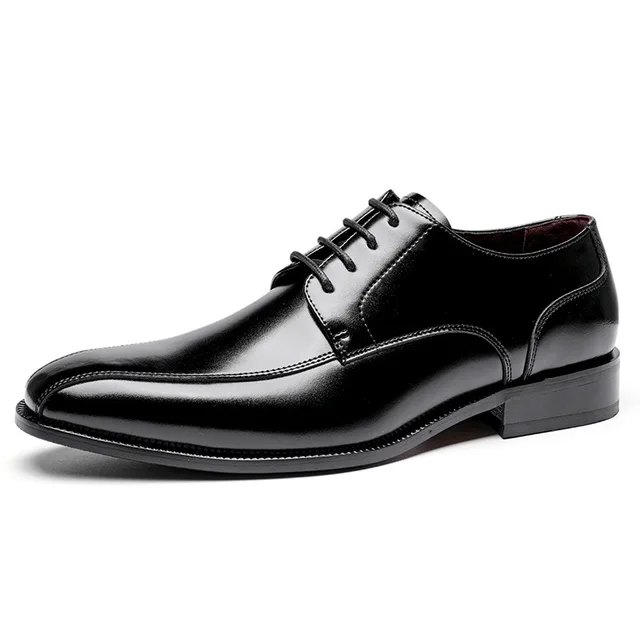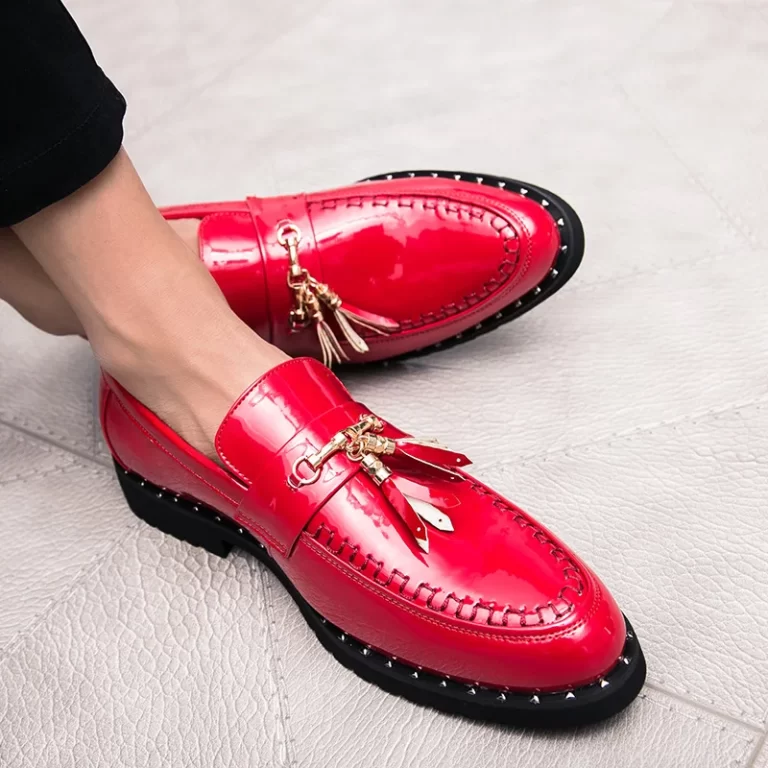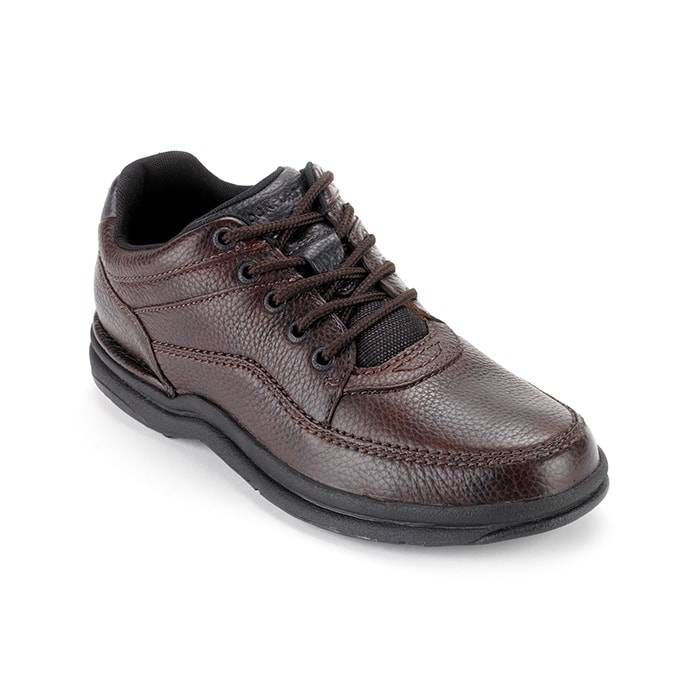Introduction to Oxford Dress Shoes
Oxford dress shoes are a quintessential element of classic men’s footwear. Renowned for their timeless elegance and versatility, these shoes have remained a staple in formal and semi-formal wardrobes for centuries. With their distinctive closed-lacing system, Oxford shoes are celebrated for their sleek silhouette and refined appearance. They offer a blend of sophistication and practicality, making them suitable for a variety of occasions, from business meetings to formal events. In this comprehensive guide, we will delve into the history, design features, and styling options of Oxford dress shoes, providing insights into why they continue to be a popular choice among discerning dressers.
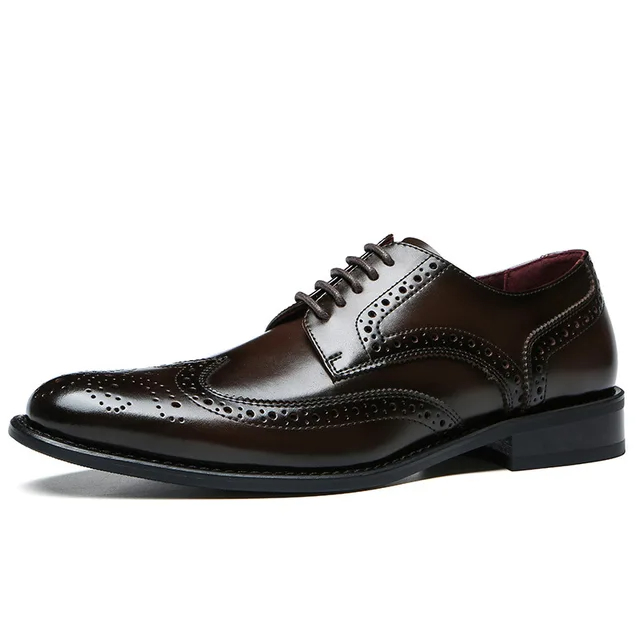
The History of Oxford Dress Shoes
Early Origins and Evolution
The Oxford dress shoe traces its origins back to the early 19th century. Its roots can be found in the traditional footwear worn by Oxford University students, which led to the name “Oxford” for this particular style of shoe. Originally, these shoes were known as “Balmorals” in Scotland, named after the Balmoral Castle where they were first popularized. The closed-lacing design, which distinguishes Oxfords from other dress shoes, was a significant evolution from the open-lacing styles that were common at the time.
The transition from Balmorals to Oxfords involved various changes in construction and design. Early Oxford shoes featured a simpler, more functional design, focusing on durability and comfort. Over time, as fashion trends evolved, so did the design of Oxford shoes. The modern Oxford shoe evolved to feature a more streamlined, elegant silhouette that became synonymous with formal wear. This evolution reflects broader changes in fashion and social norms, highlighting the adaptability and enduring appeal of the Oxford shoe.
Impact on Fashion and Formalwear
The Oxford dress shoe had a significant impact on fashion and formalwear, particularly in the early 20th century. As men’s fashion became more formal and structured, the Oxford shoe emerged as the preferred choice for dress occasions. Its clean lines and polished appearance made it a natural fit for business attire, formal events, and even military uniforms. The shoe’s versatility allowed it to adapt to various dress codes, from the classic black Oxford for formal settings to brown and tan variations for more casual or semi-formal occasions.
The rise of the Oxford shoe also coincided with broader trends in men’s fashion, such as the adoption of tailored suits and the decline of more flamboyant styles. As men’s clothing became more streamlined and minimalist, the Oxford shoe’s simple yet sophisticated design perfectly complemented these changes. This alignment with contemporary fashion trends solidified the Oxford shoe’s status as a timeless and essential component of a well-dressed man’s wardrobe.
Key Features of Oxford Dress Shoes
Design and Construction
Oxford dress shoes are characterized by several key features that distinguish them from other types of dress shoes. One of the most notable characteristics is the closed-lacing system, where the eyelets are stitched underneath the vamp, creating a sleek and streamlined appearance. This design not only contributes to the shoe’s elegant look but also ensures a snug fit, enhancing both comfort and support.
The construction of Oxford shoes typically involves high-quality leather or suede, which contributes to their durability and visual appeal. Leather Oxfords are often made from full-grain or top-grain leather, which provides a luxurious finish and long-lasting wear. Suede Oxfords, on the other hand, offer a softer, more casual look while still maintaining a degree of sophistication. The choice of material can influence the overall style and versatility of the shoe, making it suitable for different occasions and preferences.
Style Variations
Oxford dress shoes come in a range of styles, each with its own unique features and variations. Some of the most popular styles include:
- Plain Oxfords: These are characterized by their simple, unadorned design, making them ideal for formal occasions. They typically feature a smooth leather upper with minimal embellishments.
- Cap-Toe Oxfords: This style includes a distinctive cap over the toe area, adding a subtle touch of detail while maintaining the shoe’s classic look. Cap-toe Oxfords are versatile and suitable for both formal and business settings.
- Wingtip Oxfords: Featuring a decorative brogue pattern on the toe and along the edges, wingtip Oxfords offer a more ornate and stylish appearance. They are often chosen for semi-formal or smart-casual occasions.
- Brogue Oxfords: These shoes incorporate detailed perforations and decorative stitching, adding texture and visual interest to the traditional Oxford design. Brogue Oxfords can range from more casual to formal, depending on the extent of the detailing.
Each style variation of the Oxford dress shoe offers a different aesthetic, allowing individuals to choose a pair that best suits their personal style and the occasion at hand.
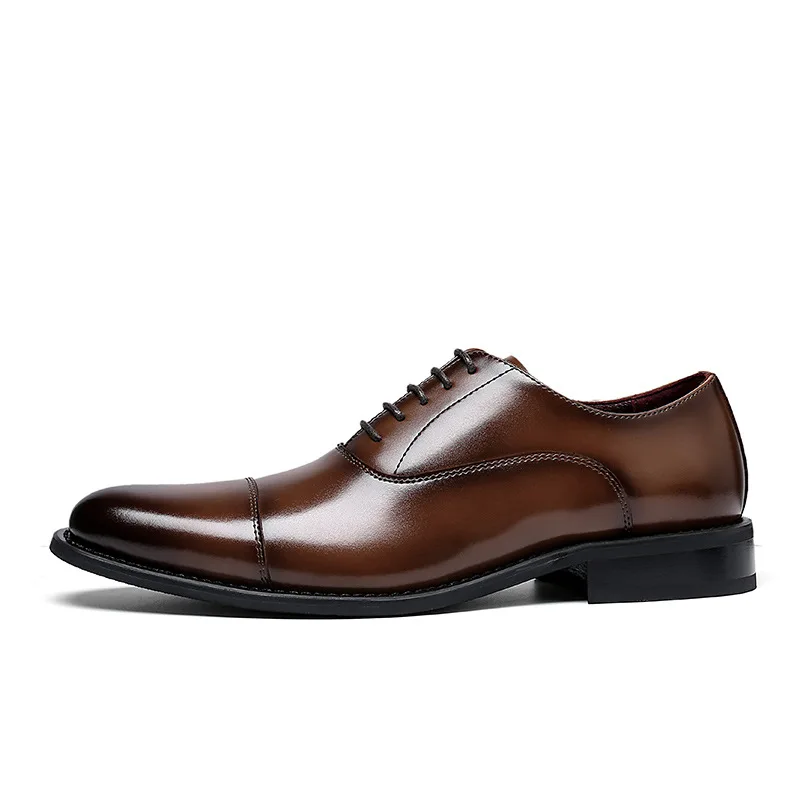
Styling Oxford Dress Shoes
For Business Attire
Oxford dress shoes are a staple in business attire, providing a polished and professional look. When selecting Oxfords for a business setting, opt for classic colors such as black or dark brown. These colors complement formal suits and dress trousers, creating a cohesive and sophisticated appearance. Pairing black Oxfords with a dark suit or charcoal gray trousers is a classic choice for formal business environments.
For a more modern business look, consider pairing brown Oxfords with lighter-colored suits or chinos. This combination adds a touch of warmth and versatility to your outfit, making it suitable for both formal and business-casual settings. Ensure that the shoes are well-polished and in good condition, as the appearance of your footwear can significantly impact your overall professional image.
For Casual and Semi-Formal Wear
Oxford dress shoes can also be styled for casual and semi-formal wear, offering a sophisticated alternative to more casual footwear options. For a casual look, consider pairing Oxford shoes with dark jeans and a blazer or a casual button-down shirt. This combination strikes a balance between formal and relaxed, making it ideal for social gatherings or casual work environments.
When dressing for a semi-formal event, such as a dinner or a party, opt for Oxfords in lighter colors or with decorative elements like broguing or wingtip detailing. These styles add a touch of personality and flair to your outfit while maintaining a level of elegance. Pairing these shoes with tailored trousers or a smart-casual suit creates a refined and polished appearance that is both stylish and appropriate for a range of occasions.
Seasonal Styling
Seasonal changes can also influence how you style your Oxford dress shoes. During the colder months, opt for darker colors and materials like full-grain leather, which provide a classic and sophisticated look. Brown or burgundy Oxfords can add a touch of warmth to your winter wardrobe, complementing dark-colored suits and wool trousers.
In the warmer months, consider lighter shades and materials like suede or perforated leather to keep your feet cool and comfortable. Light brown or tan Oxfords pair well with lighter fabrics and colors, such as linen or cotton trousers and light-colored blazers. These seasonal adjustments ensure that your Oxford shoes remain stylish and appropriate throughout the year.
Choosing the Right Oxford Dress Shoes
Material and Quality
When selecting Oxford dress shoes, material and quality are crucial factors to consider. High-quality leather is often the preferred choice due to its durability, appearance, and ability to develop a unique patina over time. Full-grain leather, which comes from the top layer of the hide, offers the highest quality and durability. Top-grain leather, while slightly less premium, still provides a refined look and is more resistant to scratches and blemishes.
Suede is another popular material for Oxford shoes, offering a softer texture and a more casual appearance. Suede Oxfords require more maintenance to keep them looking their best, as they are more susceptible to staining and water damage. However, with proper care, suede Oxfords can provide a stylish and distinctive alternative to traditional leather options.

Fit and Comfort
Ensuring a proper fit is essential for both comfort and appearance. Oxford dress shoes should fit snugly without being too tight, allowing for natural foot movement and providing adequate support. Pay attention to the width and length of the shoe, as well as any potential pressure points that may cause discomfort.
When trying on Oxfords, consider the type of socks you will be wearing, as this can affect the fit. Opt for a size that accommodates both the shoe and sock comfortably. Additionally, ensure that the shoe provides sufficient arch support and cushioning to enhance overall comfort. A well-fitting pair of Oxfords not only looks better but also ensures that you can wear them comfortably throughout the day.
Design and Aesthetics
The design and aesthetics of Oxford dress shoes play a significant role in their appeal. Classic designs, such as plain Oxfords or cap-toe styles, offer a timeless and versatile look that suits various occasions. More elaborate designs, such as wingtip or brogue Oxfords, provide additional style and visual interest, allowing for greater personal expression.
When choosing the design of your Oxford shoes, consider how they will complement your existing wardrobe and the occasions you plan to wear them for. Selecting a design that aligns with your personal style and needs ensures that your Oxfords will be a valuable and versatile addition to your footwear collection.
Maintaining Oxford Dress Shoes
Cleaning and Conditioning
Proper maintenance is essential for keeping Oxford dress shoes in top condition. Regular cleaning and conditioning help preserve the appearance and longevity of the shoes. For leather Oxfords, use a damp cloth to wipe away dirt and stains. Apply a leather cleaner and conditioner to maintain the material’s softness and shine. Leather conditioner helps prevent the leather from drying out and cracking, ensuring that the shoes remain supple and comfortable.
Suede Oxfords require different care techniques. Use a suede brush to remove dirt and restore the material’s texture. Avoid getting suede shoes wet, as moisture can damage the material. If the suede becomes stained, use a suede eraser or a specialized cleaner to address the issue
